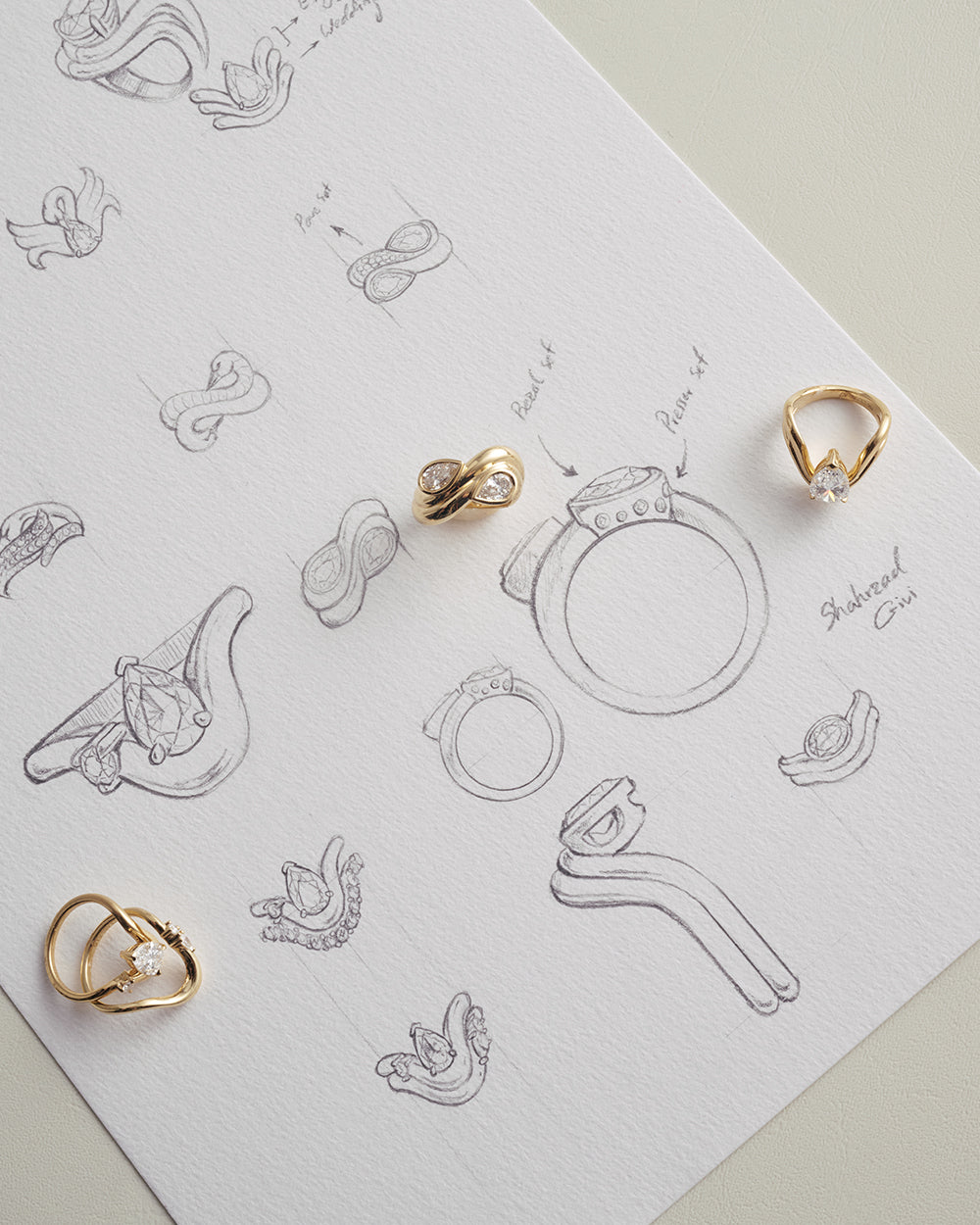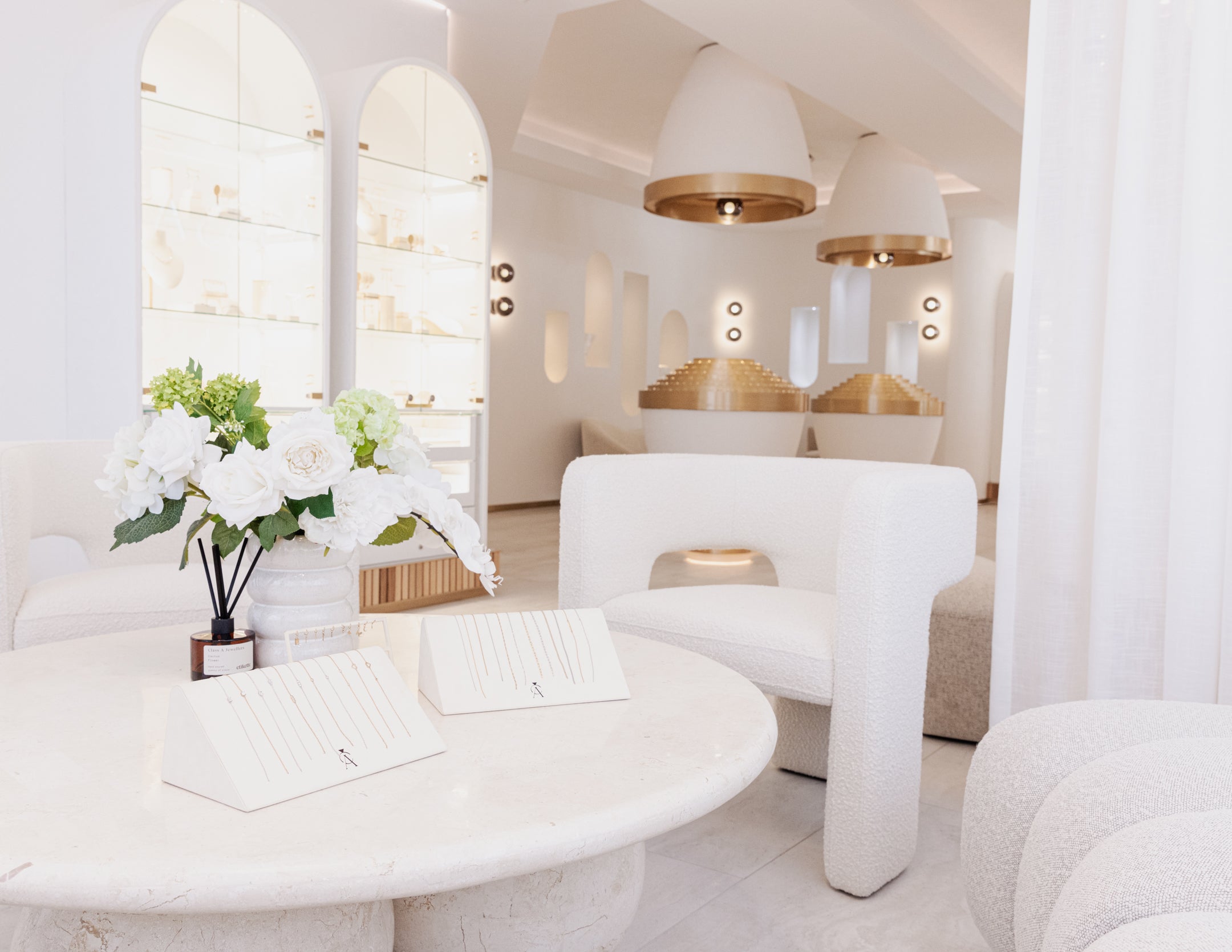Class A Jewellers
Diamond Guide
Diamonds are among nature’s most treasured gems, admired for their brilliance, strength and timeless beauty. No two stones are the same, and choosing the right one comes down to understanding what makes each diamond unique. From shape and size to the 4Cs – cut, colour, clarity and carat – our guide will walk you through the essentials so you can make a confident and informed choice.

Round

The round brilliant cut is the most popular diamond shape. Perfectly symmetrical and balanced, round brilliants are cut with 56 facets to maximise fire and brilliance.
BROWSE ROUND DIAMOND ENGAGEMENT RINGS
Oval

An oval diamond is cut in the same style as a round brilliant to maximise fire and brilliance. The elongated, elliptical shape of the oval cut diamond can give the illusion of a larger stone and a longer finger.
Pear

With its tapered teardrop shape, pear diamonds combine elements of both the round brilliant and marquise cuts. Embracing a more unconventional silhouette, the pear diamond offers a refreshing twist on traditional diamond shapes.
BROWSE PEAR DIAMOND ENGAGEMENT RINGS
Marquise

The marquise diamond is characterised by its elongated ‘boat-like’ shape with pointed ends. This striking cut maximises the diamond's carat weight and surface area, creating the illusion of a larger stone. The unique silhouette of the marquise cut not only enhances the diamond's brilliance and fire, but can also elongate the finger.
BROWSE MARQUISE DIAMOND ENGAGEMENT RINGS
Cushion

Characterised by its square or rectangular shape with rounded corners, the cushion cut diamond is reminiscent of a pillow or cushion. This distinctive cut features large facets to enhance its brilliance, ensuring a mesmerising sparkle that captivates from every angle.
Radiant

The radiant cut diamond is typically rectangular in shape but can also be square. Complemented by cropped corners, this cut seamlessly combines the elongated shape of an emerald cut with the captivating brilliance and fire of a round brilliant.
Emerald

Emerald cut diamonds are traditionally rectangular shaped with bevelled corners and elongated, open facets which highlight the clarity of the diamond. The rows of narrow facets, known as step cuts, create a captivating 'hall of mirrors' effect. Ideal for minimalists, this unique cut offers a subtle sparkle, making it a perfect choice for those who appreciate understated elegance.
Princess

The princess cut diamond, featuring four pointed corners and a square shape, is renowned for its exceptional fire and scintillation. Its precisely angled facets maximise brilliance, creating a captivating sparkle.
THE 4CS
The 4Cs of Diamonds – Colour, Cut, Clarity and Carat Weight were established by the Gemological Institute of America (GIA) and are now recognised worldwide as the universal standard for describing and comparing diamond quality. Understanding the 4Cs will give you the knowledge and confidence to choose a diamond that best suits your style, preferences and budget.

Characteristics & Quality
Lab grown diamonds are chemically, physically and optically identical to mined diamonds. To the naked eye, they look the same – even experienced jewellers and gemmologists cannot distinguish between them without specialised testing equipment.
Value for Money
Lab grown diamonds are typically more affordable than mined diamonds, making them an attractive option for those seeking greater size or higher quality within their budget. In many cases, you can select a larger or finer lab grown diamond for a fraction of the cost of a comparable natural stone.
Eco-Friendly
Lab grown diamonds are created in highly controlled laboratory environments, meaning no mining is required. As a result, their production has far less impact on the environment compared to traditional diamond mining.


















